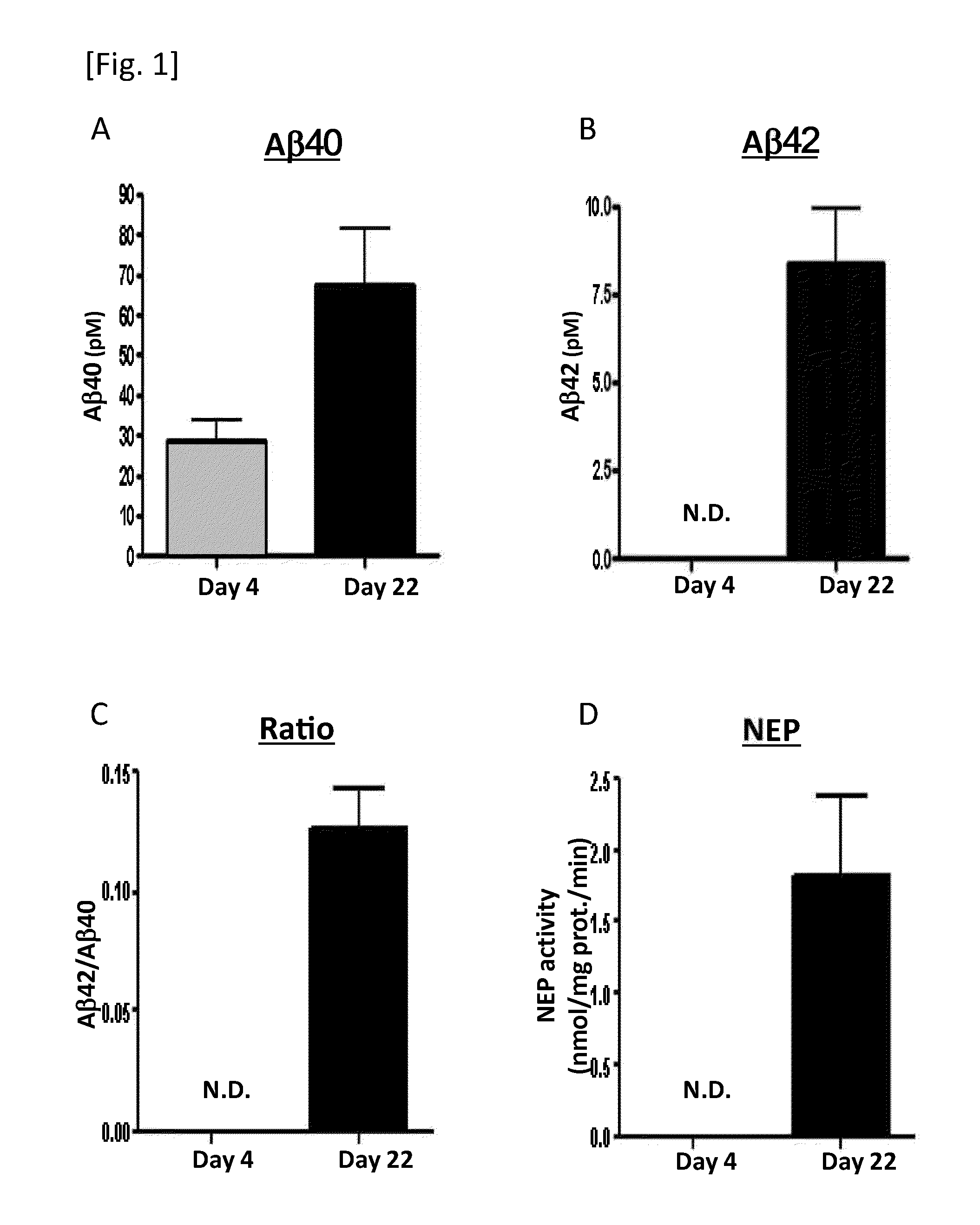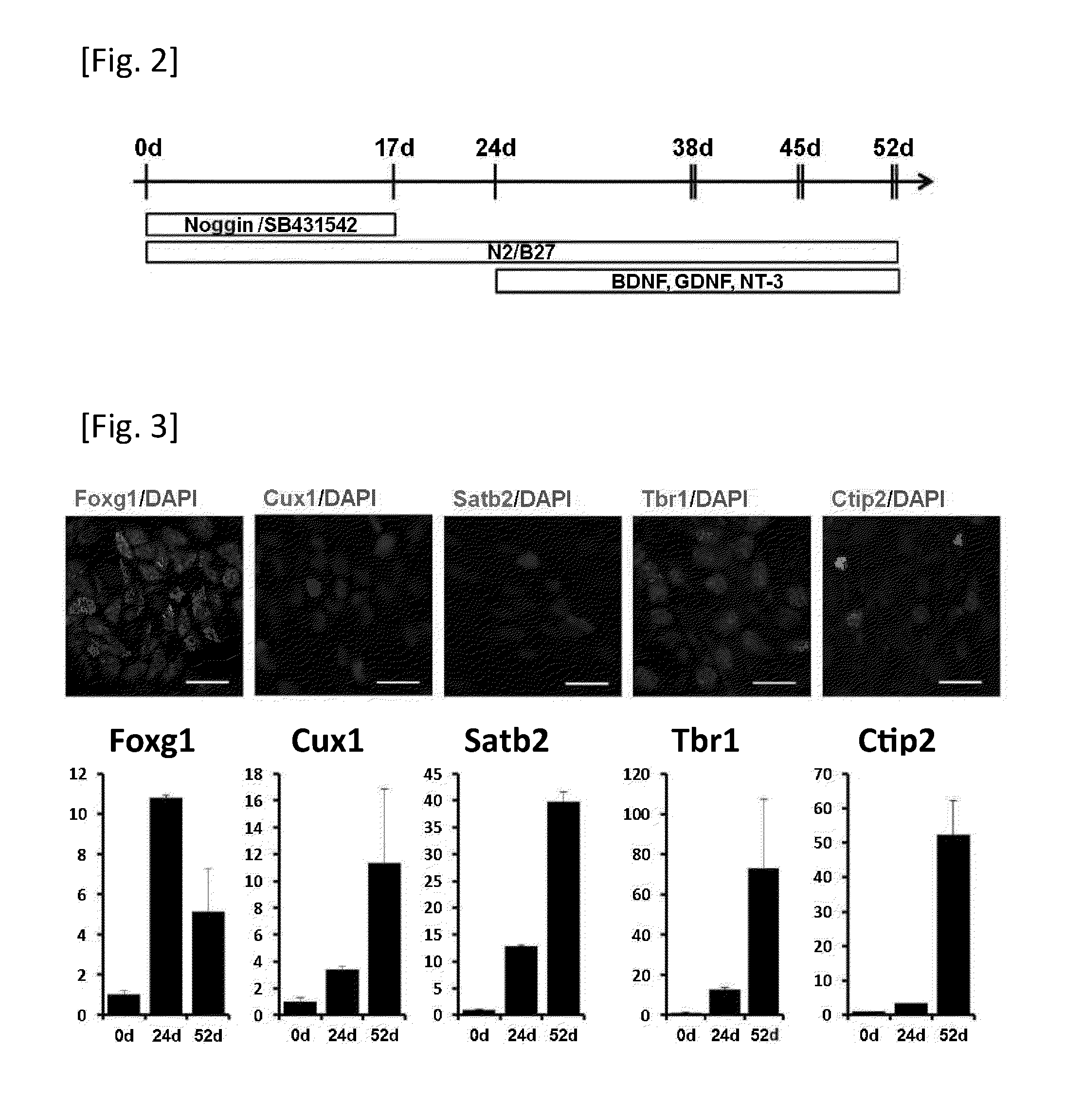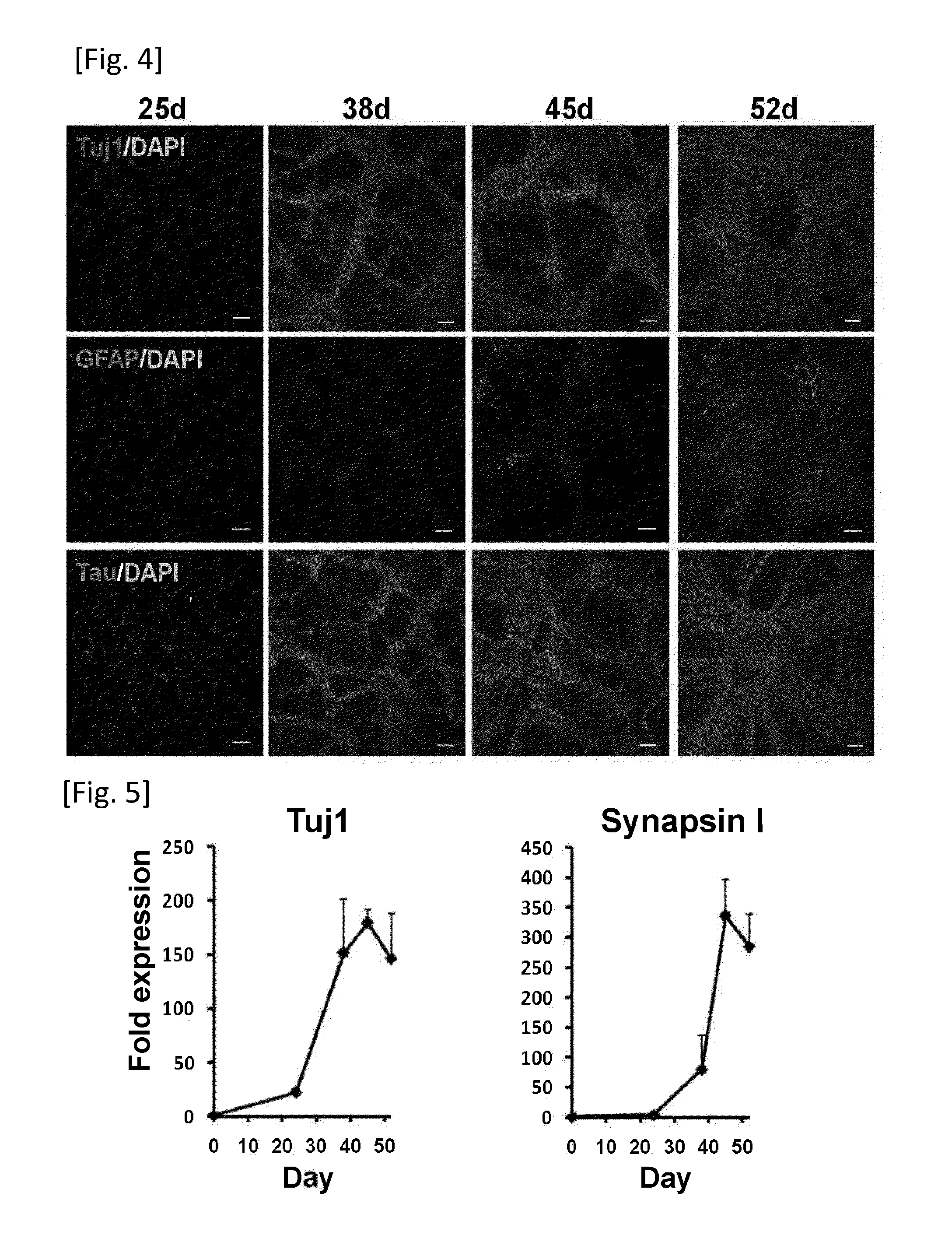Method for diagnosing a protein misfolding disease using nerve cells derived from ips cells
a technology of nerve cells and ips cells, which is applied in the field of protein misfolding disease diagnosis, can solve the problems of difficult to distinguish between progression, difficult to preliminarily prepare data sets showing the amount of causative protein or the like at the respective ages over a wide range of ages in a control subject, and difficulty in detecting the onset of a protein misfolding diseas
- Summary
- Abstract
- Description
- Claims
- Application Information
AI Technical Summary
Benefits of technology
Problems solved by technology
Method used
Image
Examples
example 1
iPS Cells
[0161]253G4 described in Nakagawa M, et al., Nat Biotechnol. 2008 January; 26(1):101-6. was used as the iPS cell,. Briefly, the iPS cells were established by introducing Oct3 / 4, Sox2 and Klf4 to fibroblasts derived from a Caucasian female of 36 years old.
Formation of Neurosphere
[0162]The formation of a neurosphere was carried out by the method described in Wada T, et al, PLoS ONE 4(8), e6722, 2009 with a slight modification. More particularly, the iPS cells were divided into small clusters and cultured using N2B27 medium (Gibco) prepared by mixing DMEM / F12 and Neurobasal medium A together at a volume ratio of 1:1 and adding 1% N2, 2% B27 and 200 μM glutamine thereto, in a dish coated with poly-L-lysine / laminin (PLL / LM) (Sigma-Aldrich). Further, to this medium, Noggin (R&D systems) was added at 100 ng / ml. The medium was replaced with a medium containing 100 ng / ml Noggin every 3 days, and, after 10 days of culture, the cells were subcultured to a PLL / LM-coated dish. Thereafte...
example 2
[0174]Method of Differentiation into Nerve Cells
[0175]Human iPS cell line 253G4 were cultured on mitomycin C-treated mouse embryonic fibroblasts in primate ES medium (ReproCELL) supplemented with bFGF (Wako). To obtain neurons derived from the iPS cell line, the reported method was partially modified (Wada, T. et al 2009, Chambers, S. M. et al 2009). Briefly, small clumps of iPS cell colonies (40-100 μm in diameter) were selected with Cell Strainer (BD Falcon) and plated on poly-L-lysine (Sigma) / Laminin (BD Falcon) (PLL / LM) coated dishes in N2B27 medium [DMEM / F12, Neurobasal, N2 supplement, B27 supplement, L-Gln], supplemented 100 ng / ml human recombinant Noggin (R&D systems) and 1 μM of SB431542 (Sigma) for 10 days. Then the colonies were dissociated into small clumps by 200 U / ml Collagenase with CaCl2 and plated into PLL / ECL (Millipore) coated dishes. After 7 days culturing, the cells were dissociated by Accutase (Innovative Cell Technologies) and cultured on PLL / ECL coated dishes ...
example 3
iPS Cells
[0179]Alzheimer's disease (AD)-iPS cell line was established by using the method described in Takahashi K, et al, Cell. 131:861-72, 2007. Briefly, the iPS cells were established by introducing Oct3 / 4, Sox2, Klf4 and c-Myc to fibroblasts derived from Sporadic AD patient who has the ApoE 3 / 4 isoform and has an onset of the disease in 50's.
Method of Differentiation into Neurons
[0180]To obtain neurons derived from AD-iPS cell line, the method described in Example 2 was used. The neurons were evaluated with expression of Tuj1, Tau, SATB2, CUX1, CTIP2 and TBR1 (FIGS. 13 and 14). It was observed that expression of the neuron related genes in AD-iPS cell line was indistinct from that of normal iPS cell line described in Example 2.
Analysis of Aβ Concentration in Nerve Cells
[0181]The contents of Aβ40 and Aβ42 in the nerve cells derived from AD-iPS cells were measured with the ELISA method described in Example 1. The concentration of Aβ40 and Aβ42, ratio (Aβ42 / Aβ40) and relative amoun...
PUM
| Property | Measurement | Unit |
|---|---|---|
| Ratio | aaaaa | aaaaa |
| Degradation properties | aaaaa | aaaaa |
Abstract
Description
Claims
Application Information
 Login to View More
Login to View More - R&D
- Intellectual Property
- Life Sciences
- Materials
- Tech Scout
- Unparalleled Data Quality
- Higher Quality Content
- 60% Fewer Hallucinations
Browse by: Latest US Patents, China's latest patents, Technical Efficacy Thesaurus, Application Domain, Technology Topic, Popular Technical Reports.
© 2025 PatSnap. All rights reserved.Legal|Privacy policy|Modern Slavery Act Transparency Statement|Sitemap|About US| Contact US: help@patsnap.com



